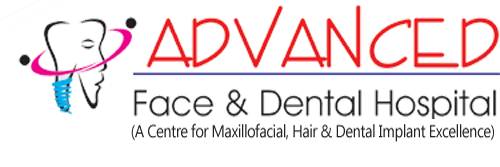The temporomandibular joint (TMJ) is where your lower jaw (mandible) attaches to the base of your skull (on each side of your head). If you place your fingers just in front of your ears and open your mouth, you can feel these joints move. The TMJ acts as a hinge allowing your mouth to open and close and move from side to side when chewing.
What are TMJ disorders?
TMJ disorders affect one or both TMJs and the muscles and tissues surrounding them. They can cause pain, joint noises (clicking or grinding noises) and can restrict jaw movement and function. Often , symptoms are temporary and do not require treatment. However some people do require treatment, which can include non-surgical (in most cases) or surgical management.
Common Causes of TMJ Disorders:
Often the cause of a TMJ problem is unknown. In many cases there are several factors causing the problem. Common causes of TMJ trouble are:
- Trauma resulting from an injury caused by a knock to the jaw. This can cause injury to the soft tissue or bone of the joint.
- Displacement of the cartilage (meniscus) within the jaw joint can lead to clicking or locking of the joint with limitation of mouth opening.
- Many people clench or grind their teeth, either during the day or at night while asleep. This is caused by tension in the chewing muscles which can become painful because of fatigue, and lead to overloading of the jaw joints, causing pain the joints themselves. This is often aggravated by stress.
- A TMJ disorder can be worsened by a bad occlusion (bite).
- The jaw joints can be affected by degenerative diseases such as rheumatoid arthritis or osteoarthritis.
Non-surgical treatments
Since most TMJ disorders are temporary and don’t get worse, simple and conservative treatment is frequently all that is required. These treatments include:
Modified diet – soft foods that require little chewing should be consumed for a period to rest the jaw. It is especially important to avoid foods which require a lot of biting force with the mouth widely open, such as biting into whole apples.
Avoidance of extreme jaw movements – patients should support the jaw while yawning, so that mouth opening is limited to 1cm.
The use of local heat on the chewing muscles helps to relax these muscles and provide relief from pain. A convenient form of local heat is a microwaveable wheat bag which can be used for 15 minutes several times daily.
Occlusal appliance therapy – Devices like bite plates, splints and mouth guards can be worn at night to take pressure off jaw joints and teeth. This is one of the most common non-surgical treatments for TMJ disorders.
Physiotherapy – Gentle stretching of the muscles, massage and exercises to reduce pain and stiffness in the jaw joint and improve strength can be used.
Relaxation and stress management – Learning how to relax and minimise stress can help reduce clenching and grinding of teeth (especially at night) which can provide relief.
Surgical treatments
If non-surgical treatments fail to work, surgery may be necessary to reduce pain and discomfort and improve jaw function. There are three main surgical procedures we offer to treat TMJ disorders:
Arthrocentesis and Lavage – This is a relatively simple procedure. A special liquid is flushed through the joint space and the jaw joint is gently manipulated. This procedure is usually limited to restoring jaw function to a previously locked jaw. This can be carried out under local anaesthetic with sedation in our room, or under general anaesthetic as a day case in hospital.
Arthroscopy – This is a common procedure used to treat TMJ disorders and is minimally invasive. A small puncture point is made in front of the ear. Into this a miniature telescope is inserted so we can look for pathology within the joint. It is often possible to carry out certain limited surgical procedures through the arthroscope. This treatment is carried out under general anaesthetic in hospital, usually as a day case.
Aggressive surgical therapies are a last resort with TMJ disorders. In most cases non-surgical techniques will provide relief. Proper diagnosis is most important with TMJ disorders and we are experienced at providing our patients with the treatment option that is right


